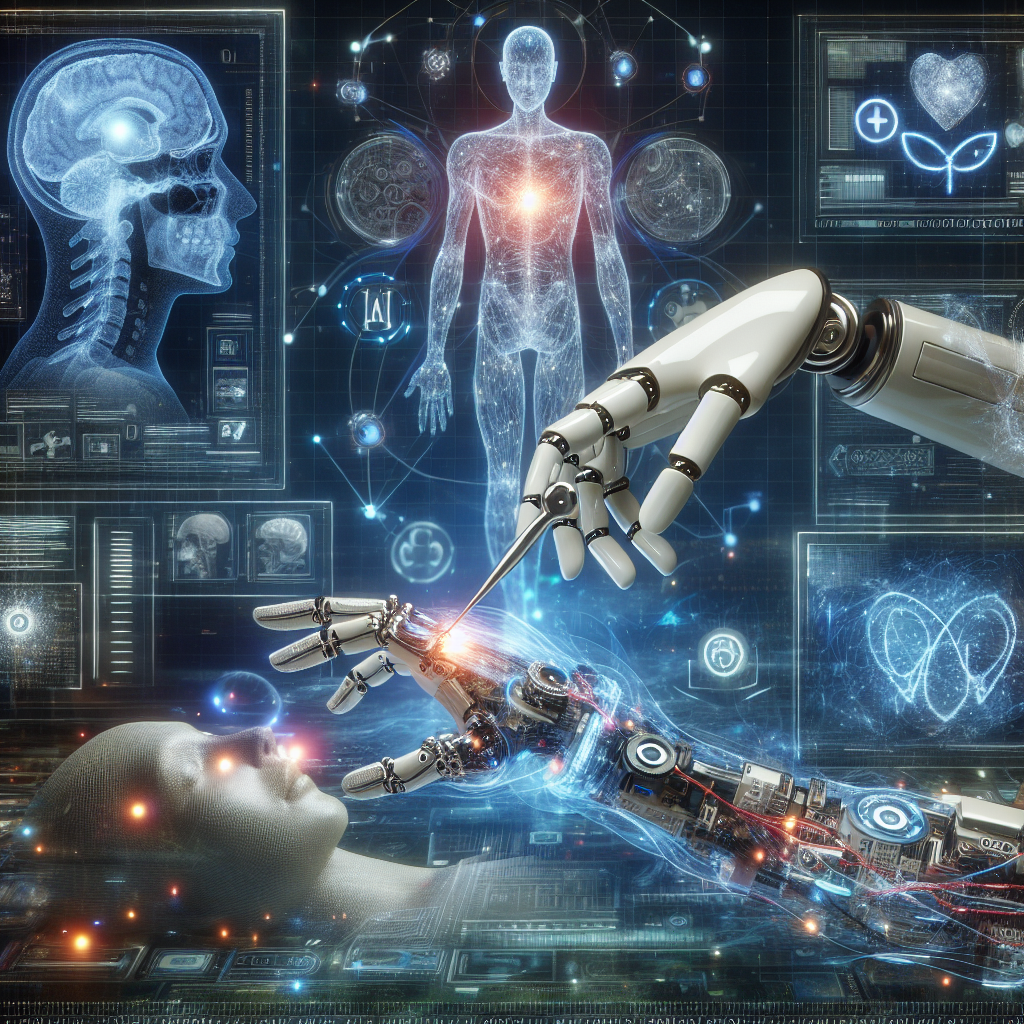Artificial intelligence (AI) and medical robotics are two cutting-edge technologies that are revolutionizing the healthcare industry. The integration of AI and robotics in medicine has the potential to significantly improve patient outcomes, increase efficiency, and reduce costs. From robotic surgery to AI-powered diagnostics, these technologies are shaping the future of healthcare in ways that were once thought impossible.
AI in Medicine
Artificial intelligence, a branch of computer science that aims to create machines that can perform tasks that typically require human intelligence, has made significant advancements in the field of medicine. AI algorithms are capable of analyzing large amounts of data, identifying patterns, and making predictions with a level of accuracy that surpasses that of human experts.
One of the most promising applications of AI in medicine is in medical imaging. AI algorithms can analyze medical images such as X-rays, MRIs, and CT scans with remarkable precision, helping radiologists detect abnormalities and make more accurate diagnoses. AI can also help doctors personalize treatment plans based on a patient’s individual characteristics, leading to more effective and targeted therapies.
Another area where AI is making a significant impact is in drug discovery. AI algorithms can sift through vast amounts of data to identify potential drug candidates, predict their efficacy, and optimize dosages. This can significantly expedite the drug development process, bringing new treatments to market faster and at a lower cost.
In addition to medical imaging and drug discovery, AI is being used in a variety of other healthcare applications, such as predictive analytics, virtual health assistants, and remote patient monitoring. These technologies have the potential to transform the way healthcare is delivered, making it more personalized, efficient, and accessible.
Medical Robotics
Medical robotics, on the other hand, refers to the use of robots to perform surgical procedures, assist doctors in diagnosing and treating patients, and automate various healthcare tasks. Robotic surgery, in particular, has gained widespread acceptance in recent years due to its precision, dexterity, and ability to minimize the invasiveness of procedures.
Robotic surgery systems, such as the da Vinci Surgical System, use advanced robotic arms controlled by a surgeon to perform minimally invasive procedures with greater accuracy and control than traditional surgical techniques. These systems have been used in a wide range of surgical specialties, including urology, gynecology, and general surgery, and have been shown to reduce complications, shorten recovery times, and improve patient outcomes.
In addition to robotic surgery, medical robots are also being used for tasks such as drug dispensing, sterilization, and patient transport. These robots can help healthcare providers streamline their operations, reduce the risk of errors, and improve patient safety.
The Future of AI and Medical Robotics
The integration of AI and medical robotics has the potential to revolutionize healthcare in ways that were once thought impossible. By combining the analytical power of AI with the precision and dexterity of robots, doctors can deliver more accurate diagnoses, personalized treatments, and minimally invasive procedures, leading to better outcomes for patients.
In the future, we can expect to see even more advanced applications of AI and robotics in healthcare. For example, AI-powered virtual health assistants could provide patients with personalized health recommendations, reminders, and support, helping them manage chronic conditions and stay healthy. Robots equipped with AI algorithms could autonomously perform routine tasks in hospitals, such as cleaning and disinfecting, freeing up healthcare workers to focus on more critical tasks.
FAQs
Q: What are some examples of AI-powered medical devices?
A: Examples of AI-powered medical devices include wearable health trackers that monitor vital signs, AI algorithms that analyze medical images for abnormalities, and virtual health assistants that provide personalized health recommendations.
Q: How is AI being used in drug discovery?
A: AI is being used in drug discovery to identify potential drug candidates, predict their efficacy, and optimize dosages. This can significantly expedite the drug development process, bringing new treatments to market faster and at a lower cost.
Q: What are the benefits of robotic surgery?
A: Robotic surgery offers several benefits, including greater precision, dexterity, and control than traditional surgical techniques, reduced invasiveness, shorter recovery times, and improved patient outcomes.
Q: How can AI and robotics improve patient care?
A: AI and robotics can improve patient care by enabling more accurate diagnoses, personalized treatments, and minimally invasive procedures, as well as streamlining healthcare operations and reducing the risk of errors.
In conclusion, the integration of AI and medical robotics holds great promise for the future of healthcare. These technologies have the potential to revolutionize the way healthcare is delivered, making it more personalized, efficient, and accessible. With continued advancements in AI and robotics, we can expect to see even more innovative applications that will improve patient outcomes, increase efficiency, and reduce costs in the years to come.

